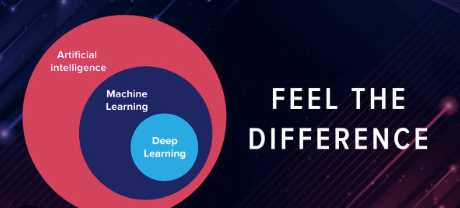Artificial Intelligence (AI) is an evolving technology that enables machines to learn and improve from experience. Machine learning (ML) and deep learning (DL) are two popular subsets of AI that are often used interchangeably. However, there are significant differences between these two approaches. In this blog, we will explore how deep learning is different from machine learning.
Machine learning is a type of AI that involves training a model to make predictions based on input data. The model learns from data patterns and is trained using supervised or unsupervised learning techniques. Supervised learning involves feeding the model with labeled data, while unsupervised learning involves training the model without labeled data.
Deep learning, on the other hand, is a subset of machine learning that uses artificial neural networks to model and solve complex problems. It involves training a neural network with multiple layers of interconnected nodes, allowing it to learn hierarchical representations of data.
One of the main differences between machine learning and deep learning is the complexity of the problems they can solve. Machine learning is suitable for solving simpler problems that involve a limited number of variables, while deep learning can handle more complex problems that involve a large amount of data.
Another difference is the level of human involvement required. Machine learning models are designed by humans, who select the features that the model will use to make predictions. In contrast, deep learning models can automatically extract features from the data, reducing the need for human intervention.
Furthermore, machine learning algorithms are often designed to work with structured data, such as numerical or categorical data. In contrast, deep learning algorithms can work with unstructured data, such as images, audio, and text. This makes deep learning well-suited for tasks such as image and speech recognition.
Deep learning models require a large amount of data to be trained effectively. This is because the neural network consists of multiple layers, each of which requires a significant amount of data to learn. In contrast, machine learning models require less data to be trained effectively.
Another difference between machine learning and deep learning is the computational resources required. Deep learning models require more computational resources, such as high-performance GPUs, due to the large number of parameters that need to be learned. This makes deep learning more expensive than machine learning.
One of the key benefits of deep learning is its ability to learn and improve from experience. Deep learning models can continue to improve their accuracy as more data is fed into the network. This is in contrast to machine learning, where the model's accuracy may plateau as the amount of data increases.
Another benefit of deep learning is its ability to generalize to new data. Deep learning models can learn features that are transferable to new data, allowing them to make accurate predictions even when presented with data that they have not seen before. In contrast, machine learning models may struggle to generalize to new data if they have not been trained on a similar dataset.
Conclusion
Deep learning is a subset of machine learning that uses artificial neural networks to model and solve complex problems. Deep learning can handle more complex problems and unstructured data, requires more computational resources, and can continue to improve its accuracy as more data is fed into the network. Machine learning is suitable for simpler problems and structured data, requires less data to be trained effectively, and is less computationally expensive. While both approaches have their advantages and disadvantages, deep learning is particularly well-suited for solving complex problems that involve unstructured data.




Leave Comment